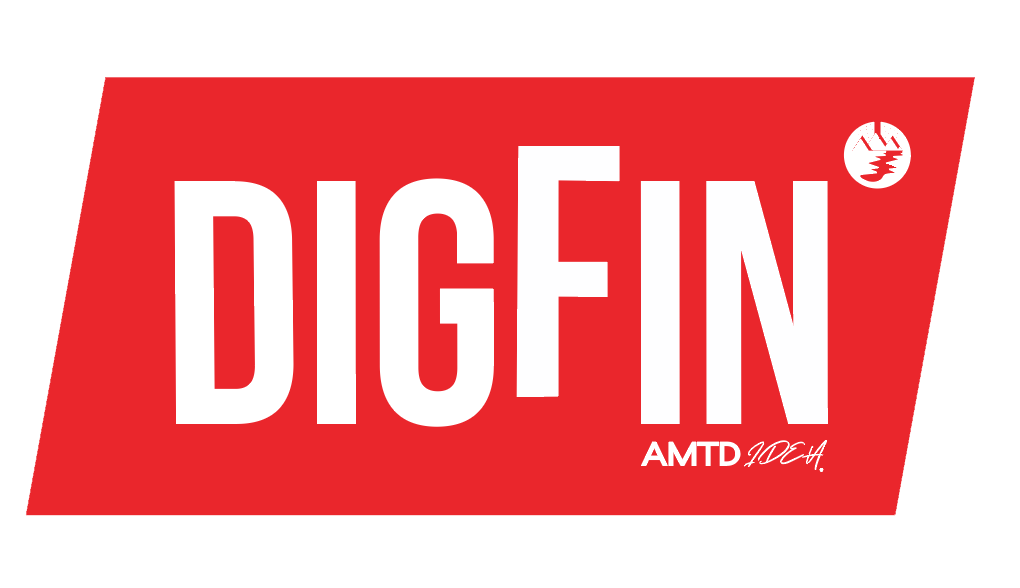Perspectives
Video games are the new frontier of fintech
Financial services – if not financial institutions – will be increasingly integrated with video games.
Published
3 years agoon

Amid non-stop hype around Web3, the metaverse, crypto, and other nebulous concepts, cuts the question: what problems can these ideas solve?
Problems in the real world, existing, concrete problems, as opposed to the magic-bean-upon-bean challenges troubling the minds of techno-libertarians.
Problems, in other words, that financial services should be addressing, or solutions that financial institutions should adopt.
Financial inclusion is just as slippery, as buzzwords go. But most people would agree that providing financial access and opportunity to more people, delivered in a way that addresses human wants, sounds desirable.
The vehicle through which digital-native finance can meet some of those needs is video gaming. If early successes can scale, games will become important conduits for financial institutions. They may even start to use games for their own ends.
“Video games is the new fintech,” Matthias Kroener, the founder of Germany’s Fidor Bank and now managing director at Tradelite Solutions, which builds games for financial institutions, said at a recent conference.
Play to Earn
DigFin first wrote about video games, non-fungible tokens and micropayments in early 2019, with a look at how Fortnite was pioneering lifestyles in its community. That’s a centralized platform in which gamers pay to participate, but already people were looking at ideas of how to monetize aspects of the game.
Venture investors also looking to games as a means to scale the nascent NFT marketplace and moving games to decentralized apps.
- Read more:
- Micropayments and Marshmellow
- Meet the man investing Block.one’s venture money
- Wanted: Web3 projects adding real-world value
These expectations were realized last year with the first play-to-earn gaming business, YGG, which launched in the Philippines in June. Its founder, Gabby Dizon, had been playing a video card game called Axie Infinity back in 2018. He saw other Filipinos couldn’t afford to play the game, so he lent them his “Axies”, the cards that players could purchase.
He could do this because Axie Infinity is built on blockchain as a decentralized app and its Axies are coded as non-fungible tokens, that is, assets with a unique code and cryptographic hash.
Dizon took a cut of whatever financial rewards these other players could accrue in the game with their borrowed Axies. Axie Infinity and other blockchain-based games reward players with tokens or other crypto-based assets. People can trade these on marketplaces such as OpenSea, or even exchange them for blockchain tokens such as Ethereum. This is the key difference to paying a fee to play a game in a traditional medium, be it web-based like Fortnite or on a console like Nintendo or Xbox.
Dizon was therefore earning revenue in two ways: by splitting the token rewards garnered by his network of players, and through the appreciation of the NFT assets the players were using.
When COVID-19 forced a lockdown, playing Axie Infinity became a financial lifeline for many poor Filipinos, and Dizon decided there was a global market for this sort of business.
He founded YGG (Yield Gaming Guild) in 2021 to manage the network as well as provide his players with a sense of community, including training on the ins and outs of NFTs and crypto, mentorship to improve playing skills, and donations to local community charities.
Players, called “scholars” (as in, recipients of scholarships), earned $8.6 million in 2021, with YGG paying out over $1 million a week.
Shortly thereafter, a16z (Andreeson Horowitz) led a $4.6 million financing round in YGG. “The way we define a ‘job’ is quickly evolving because of crypto and gaming,” the venture-capital firm said in a statement.
Gaming’s profile
It would be a mistake to assume gamers are just young people.
The gaming industry in 2020 was valued at $173 billion, according to OGLife, a startup from the U.S. that is building its own play-to-earn ecosystem. Citing research from Mordor Intelligence, it says the industry is growing at a compounded 9.64 percent, with Asia Pacific the largest market. Cloud and 5G make mobile gaming the fastest growing segment.

Men and women of all ages play games: there is an estimated 2.8 billion gamers worldwide. In the U.S., an estimated 64 percent of adults are gamers.
OGLife is targeting adults and seniors, including current and former military, emergency responders, and healthcare workers – people who suffer physical and mental wounds, disabilities, lonely deployments, and dangerous jobs.
This is the developed world’s equivalent of financial inclusion.
The new old metaverse
The idea of combining crypto with virtual-reality environments gained currency last year when Mark Zuckerberg rebranded Facebook as Meta.
“The open metaverse is what Web3 should look like,” said Evan Auyang, group president of Animoca Brands, a Hong Kong gaming tech company. Web 3 refers to the idea of a decentralized Internet of Value, meant to disrupt the power of centralized online platforms like Google and Facebook.
But the metaverse predates crypto and virtual reality. Today’s ferment can be traced back to 2003 – years before the iPhone or bitcoin – when a San Francisco startup called Linden Lab introduced Second Life.
Second Life is an online multimedia platform that lets users interact in the form of digital avatars. Unlike games, Second Life has no objective or baked-in conflict. It’s literally meant to be a digital version of daily life.

The concept took off, and Second Life peaked in 2013 with around 1 million users interacting in a closed-loop digital economy that by 2015 had reached about $500 million. Second Life allowed users to transact using its own currency, Linden dollars. This virtual currency remains limited to buying, selling, renting, and trading virtual land, services, and goods within Second Life. Because users can pay in U.S. dollars or other real money to acquire Linden dollars, participants were able to start making profits in Lindens that they later exchanged for greenbacks: up to $60 million was cashed out in 2015.
The Linden dollar is not a cryptocurrency like Bitcoin. It is entirely controlled by Linden Lab. It’s more like scrip issued by companies or cities for use in their communities.
(Scrip has a checkered history of its own, including money for internal use among leper colonies, a failed attempt at creating a global currency for Esperanto enthusiasts; more successful municipal scrip such as Ithaca Hours and the Brixton Pound; and new experiments such as MiamiCoin.)
In 2009, Chinese artist Cao Fei launched RMB City, a space within Second Life that was designed for performances and art. (The images in this story are stills taken from RMB City.) In 2009, she produced RMB City Opera, merging virtual and physical space, allowing avatars to interact with a live audience – a prequel to games like Fortnite bringing in DJs and pop stars for real-time, virtual gigs.
Virtual worlds decentralized
Blockchain companies are also creating decentralized versions of Second Life – not games but virtual realities in which people interact via avatars, but with NFTs powering virtual assets that can be used for exchange.
Animoca Brands has created a company called The Sandbox to create one such decentralized virtual world. Built on Ethereum, it offers gaming, opportunities to buy and sell virtual real estate, and investing NFTs into DeFi applications to earn more of the platform’s governance token, $SAND.
$SAND can be traded for Ethereum and ultimately for dollars, creating a financial link between virtual worlds and the real one. Second Life could do this too, but whereas Linden Lab had total power over its Linden dollar, NFTs and tokens are immutable, and users can asset ownership.
Similarly, users can own whatever they create within this environment – whereas if Facebook/Meta launches a virtual world, it will own the real estate.

The company is still in test mode, but it has already attracted attention. In November, Softbank’s Vision Fund 2 led a $93 million investment round into The Sandbox.
The money is meant to support creators and artists to develop a player-owned economy and add more brands to the virtual world; the company says it already has 500,000 wallets signed up and 30,000 active monthly users.
This was followed in December by PwC announcing it would acquire virtual real estate, to explore how it can communicate with clients in the metaverse.
Player-owned protocols
Crypto – specifically, NFTs combined with DeFi-style lending and collateral protocols – is turbocharging these virtual worlds into financialized games. Proponents believe blockchain delivers a better experience than traditional games (owned and operated by corporations) because they allow the players to earn money and even own a slice of the platform with tokens that can appreciate if the network continues to grow.
The Axie Infinity example shows that people in the Philippines and Indonesia have been able to supplement their income by playing games on behalf of virtual-asset lenders.
Other businesses are now springing up in YGG’s image and they are framing these in terms of community benefits.

From the U.S., OGLife’s white paper talks about “Thriving-as-a-Service” to provide mental and physical wellness as well as financial opportunity. OGLife is aimed at “Original Gamers” who earn its governance token, $OGL, by completing healthy tasks as well as participating in game tournaments. The token operates on the Solana blockchain.
The company aims to equip its users with a community. For its target market of military vets, healthcare workers and people with disabilities, it says OGLife offers coping mechanisms and training in basic software and other basic business skills, as well as earnings from gaming.
“The majority of gamers prefer to play with others and feel that games help them stay connected to friends and family,” said Brandon Sivret, CEO. “As gamers age, the motivation shifts from connecting to a community online towards staying mentally aware and keeping cognitive skills sharp.”
Kroener of Tradelite adds that financial inclusion is not just a problem in emerging markets: he says 30 percent of Germans are financially illiterate and 5 percent lack access to banking services.
Another new player is Singapore-based Avocado Guild, which has also built a userbase in the Philippines and Indonesia aimed at Axie Infinity, with a $AVG token built on Ethereum.
Backed by Animoca Brands, among others, Avocado Guild also invests in games and platforms, with the intention of building an ecosystem of blockchain-based games in which it can deploy its users.
“Blockchain gaming will be adopted by traditional gaming market soon,” says Avocado Guild’s co-founder and CEO, Brendan Wong.
Problems in paradise
There remain plenty of challenges to these new companies and business models – for the entrepreneurs as well as for their users.
Many of them are promoting DAOs, or decentralized autonomous organizations, to govern these worlds and protocols.
This is considered critical if these platforms are to be considered decentralized and therefore working for users/tokenholders, not just for the company that set it up. Their smart contracts are meant to set a level playing field and enforce agreed-upon rules.
DAOs remain in an unstable phase of experimentation. Prominent examples such as last year’s ConstitutionDAO simply haven’t worked. The group raised $47 million in Ether to buy an original copy of the U.S. Constitution but when it lost the bid, the DAO’s software couldn’t return the money to its members.
DAO software can be just as inscrutable as a lawyer’s document. Squabbles in the NFT world over copyright and true ownership of JPEGs of bored apes and so on have revealed contradictions in who wants to be protected from what.

“Some DAOs are trying to be fully automated,” said Avocado Guild’s Wong. “To fully achieve this will take time and not every DAO will make it.” That sounds reasonable but no one wants to be in a dispute over an NFT within a DAO that isn’t going to make it.
There are also questions about just how decentralized these worlds can be. Insiders and early adopters – the “whales” – own outsized portions of crypto market caps – and in many blockchains that gives them the kind of voting power that insiders enjoy in centralized tech companies. Marketplaces such as OpenSea sometimes freeze transactions. A lot of coordination in these communities takes place over Discord and Twitter, centralized platforms. The Web3 vibe is anti-VC (because VC backs centralized Big Tech) but it’s the likes of a16z and Softbank that are investing in the crypto-gaming nexus.
The biggest question is whether YGG and its progeny represent a true paradise of user-owned and operated systems, or if these are just virtual company towns, where all the stores and housing are owned by one company that is also the main employer: the coal miner, the steel plant, the fruit plantation. Some company towns also wanted to do right by their employees, but most exploited workers.
Teaching poor people the ropes to handle NFTs and crypto is fine, but is it teaching financial literacy?
Yat Siu, founder of Animoca Brands, has told DigFin that he sees games as the best way to teach young people the kind of financial skills they should learn at school, but don’t. They have to learn budgets and the value of money, as well as probabilities and risk/reward. There’s no better teacher than experience.
Crypto is, however, all about speculation, and will remain so until tokenomics are attached to real-world income streams. NFTs are volatile assets. What people might need is household budgeting, access to credit to support a small business, and an appreciation of compound interest.
Platforms probably do not want their governance tokens to be regarded as securities, however – that would invite regulation.
There is also a disconnect between the network value of a popular game and the ability of users to earn money.
Avocado Guild’s Wong says, for example, that its players were at one point earning up to $400 a month from borrowing NFTs to play Axie Infinity. But that payout has fallen to about $60 a month, below the minimum wage for most industries. That reflects an oversupply of players as well as rising costs of transacting NFTs – gas prices in Ethereum.
This creates a conflict of interest between tokenholders and players.
There is also the problem that as games lose their attractiveness, the value of the token or the market value of game-related NFTs declines. This creates an incentive for guilds to shuffle players to whatever is the hottest game. It’s the kind of strategy that works until it doesn’t.
Building better
These are genuine problems but they are unlikely to stop the momentum that is driving finance and gaming together. There are plenty of reasons for skepticism but there’s also the fact that a lot of people want to participate in this.
Startups in blockchain are innovating a lot of new ways to combine gaming and finance. Some of their ideas aren’t that original, others could prove dangerous. But it only takes one good idea to sustain this trend – at which point traditional institutions can move in.
Financial institutions should keep on top of this because gaming offers them an incredible gateway to customers, both retail and corporate. Gamers are prevalent in rich and poor countries, among men and women, young and old. There’s no gender or generation gap in marketing a service through gaming.
Games have rules, which means they create a predictable environment. People like that. It creates a welcoming environment. That’s like trust. And when people trust something, they are open to learning and to trying new things. The crypto aspect is merely providing tools to engage with players.
That’s relevant for financial institutions as well as blockchain startups – and that’s why, over time, gaming is going to become a powerful gateway for banks; why it’s going to become the new face of fintech.
You may like
The Future of Cross-Border Payments with VISA Direct
DigFin direct!

Has ASX learned the lessons of its DLT failure? UPDATED

InDrive Money and Fingular enter Indonesia ride hailing

Mikaal Abdulla is back in Hong Kong with a Boom

Finance will feel Kai-Fu Lee’s pivot to genAI applications

















